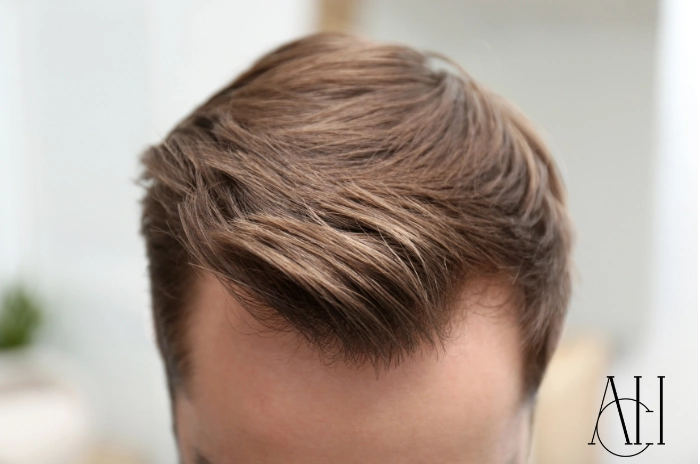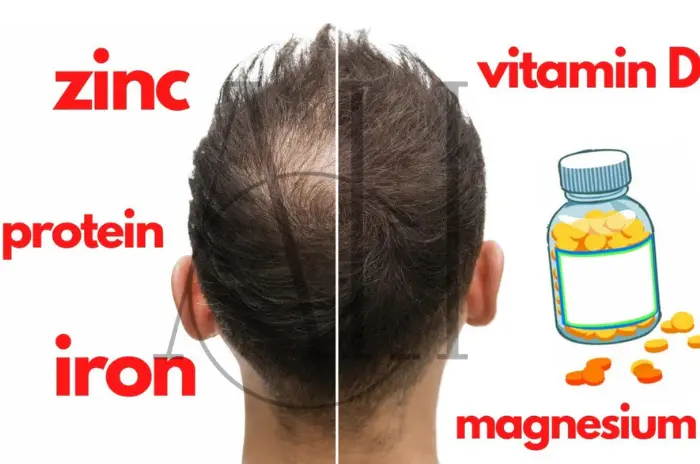A hair transplant can be a life-changing procedure, helping people restore lost hair and gain back confidence. But the success of the procedure doesn’t only depend on the surgery itself. What you do afterward matters just as much. Proper aftercare ensures your hair grafts survive, heal well, and grow into healthy, strong hair. In this complete guide, you’ll learn how to take care of your hair after a transplant and what to expect during the recovery process. These simple steps and tips will help you get the best results.
Table of Contents
ToggleHow Do Hair Transplants Work?
Understanding the Basics
Hair transplants work by moving healthy hair follicles from one part of your body (usually the back or sides of the head) to areas with hair loss. These follicles are carefully placed in thinning or bald areas to help grow new hair. The transplanted follicles continue to grow hair just like they did before, but in a new location. This makes the process natural and long-lasting.
Why Aftercare Matters
Aftercare is essential because the new grafts are delicate and need protection in the early days. The scalp needs to heal properly to avoid infection or damage. If you follow aftercare advice carefully, your grafts are more likely to grow well and give you full, healthy-looking hair. Skipping aftercare steps can lower your results and may lead to complications.
FUE Vs. FUT Hair Transplantation
What’s the Difference?
There are two main types of hair transplant techniques: FUE and FUT. In FUE (Follicular Unit Extraction), individual follicles are removed one by one with a tiny tool, leaving small dot scars. In FUT (Follicular Unit Transplantation), a strip of skin is taken from the scalp, and follicles are separated from it. This leaves a linear scar on the back of the head.
Aftercare Differences
FUE usually has a faster recovery time and causes less discomfort. FUT may need more time to heal and involves stitches. No matter which technique is used, aftercare involves keeping the area clean, avoiding sweat, and not touching the grafts. Your clinic will give specific advice based on your procedure.
Graft Growth
What to Expect
In the first few days, the transplanted grafts are weak and can be easily damaged. It’s common for the hair in the grafts to fall out around 2 to 4 weeks after surgery. This is called the shedding phase and is completely normal. The hair roots remain in the skin and will begin to grow again.
Long-Term Results
You’ll start seeing new hair growth after 3 to 4 months. The growth continues slowly over the next several months. Full results are usually visible after 12 months, though some people may see improvements up to 18 months later. With good aftercare, your hair will look natural and healthy.
Is The Hair Transplant Recovery Process Painful?
Mild Discomfort Only
The recovery process is not usually very painful. You may feel tightness, soreness, or itching in the first few days. These are normal and can be managed with medicine your doctor gives you. Most people feel better after a week.
Watch for Unusual Symptoms
If you notice strong pain, swelling, bleeding, or yellow fluid coming from your scalp, contact your doctor right away. These may be signs of infection or poor healing. Good hygiene and following all instructions can help prevent problems.
Hair Transplant Recovery Timeline
Week-by-Week Breakdown
Days 1–3: Rest at home, avoid touching or washing your hair. Use medicine and sprays provided by your clinic.
Days 4–7: Start washing hair gently. Swelling may appear on the forehead and around the eyes. Don’t scratch.
Week 2: Scabs start to fall off. Redness may remain. You can start using mild shampoo.
Weeks 3–4: The shedding phase begins. Most transplanted hairs will fall out.
Months 3–4: New hair starts to grow slowly. The donor area is usually healed.
Month 6: Noticeable new growth. Hair gets thicker.
Month 12: Full results are visible. Your hair will look natural and healthy.
Follow These Instructions For A Successful Hair Transplant Recovery
Basic Aftercare Steps
To get the best results, follow your doctor’s advice carefully. Avoid sleeping on your stomach. Instead, sleep on your back with your head raised. Don’t wear hats or helmets. Avoid touching, rubbing, or scratching your scalp. Drink water, eat healthy, and rest well.
Gentle Washing
Start washing your hair gently after 3 to 5 days. Use only the shampoo and lotions your clinic recommends. Pour water slowly over your scalp—don’t use strong water pressure. Use your hands, not a towel or sponge, and gently dab to dry.
Getting Back To Normal Life After The Procedure
Gradual Return
You can return to work after 3 to 5 days if it’s a desk job. For physical work or outdoor jobs, wait at least 7 to 10 days. Avoid sports, swimming, and heavy lifting for 2 to 4 weeks. Ask your doctor before going back to full activity.
Manage Stress
High stress can slow healing. Try to relax during the recovery. Get enough sleep, eat well, and avoid alcohol and smoking. These healthy habits support better results.
Navigating Hair Transplant Recovery
Be Patient
Recovery takes time. Some days your scalp may feel itchy or uncomfortable, and it may not look perfect at first. This is part of the healing process. Be patient and trust your doctor’s plan.
Avoid Mistakes
Do not try to speed up healing with unapproved creams or oils. Avoid strong sun, steam rooms, and hair styling tools like straighteners. Follow your clinic’s list of dos and don’ts.

What to Expect the Day Following Your Hair Transplant
Swelling and Redness
Your scalp may feel tight, red, and slightly swollen the next day. Swelling may go down to your forehead and eyes. This usually goes away in a few days.
Medication and Rest
Take all your medicines as directed. Rest as much as possible and avoid stress. Don’t bend your head forward too much, and sleep in a half-sitting position for the first few nights.
One Month Post-Op: New Growth and Care Tips
Shedding Is Normal
By one month, most transplanted hairs will fall out. Don’t worry—this is a normal part of the process. New hair growth will begin in a few months.
Keep the Area Clean
Continue gentle washing. Do not use styling gels, sprays, or color treatments yet. Protect your scalp from direct sunlight.
One Year Follow-Up: Thriving Growth and Lasting Care
Final Results
By the 12-month mark, your new hair will be fully grown in. It should blend well with your natural hair. The results are usually permanent.
Long-Term Care
Continue using mild shampoos and conditioners. Avoid hairstyles that pull on the roots. If recommended, consider supplements like biotin to keep your hair strong.
Regarding Medication and Supplements After a Hair Transplant
What to Take
Your clinic may prescribe antibiotics, pain relievers, and anti-swelling tablets. Some doctors also suggest vitamins like biotin or finasteride to support hair growth.
Follow Instructions
Always take the full course of prescribed medicine. Don’t stop or change any medicine without asking your doctor. Keep a schedule so you don’t miss doses.
Post-Hair Transplant, What To Do and Not Do
Do:
-
Follow your doctor’s instructions every day
-
Wash your hair gently
-
Keep the scalp cool and dry
-
Attend all check-up visits
Don’t:
-
Touch or rub your grafts
-
Use unapproved products
-
Expose your scalp to sun or heat
-
Miss follow-up appointments
AFTER HAIR TRANSPLANT – CARE OF GRAFTED AREA
Graft Protection
In the first 10 days, the grafts are still settling. Avoid touching them. Don’t wear caps or tight clothing that can brush against the scalp.
Cleaning Routine
Wash gently with lukewarm water. Don’t use a towel or hairdryer. Let your hair air-dry or gently pat with tissue paper.
THINGS TO REMEMBER AFTER YOUR HAIR TRANSPLANT
Healing Takes Time
You won’t see results right away. Expect ups and downs. Take photos weekly to track your progress and stay positive.
Protect From Damage
Avoid polluted places and public transport during the first week. Use a scarf or a loose hat if you need to go outside.
What To Expect After Your Hair Surgery
Early Signs
In the first week, your scalp may feel numb, itchy, or sensitive. Scabs will form and fall off naturally by the second week.
Timeline of Growth
Hair growth begins between 3 and 4 months. Full growth and final results appear after 12 to 15 months.

Essential Care Tips For Enhanced Results
Healthy Habits
Eat foods rich in iron, zinc, and protein. These nutrients support hair health. Avoid smoking, which reduces blood flow to the scalp.
Follow-Up Visits
Go to all your check-ups. Your doctor will check your progress and suggest helpful treatments like PRP or laser therapy.
Monitoring Your Progress: What To Expect
Track Growth
Use photos and notes to monitor your recovery. Share them with your doctor during follow-ups to track success.
Ask Questions
If anything looks or feels wrong, don’t guess—ask your clinic. It’s better to get help early than risk your results.
Can You Explain the Recovery Process, and How to Get Great Results?
Step-by-Step Healing
First comes healing, then shedding, then growth. Stick to your doctor’s plan and don’t skip steps. The process is slow, but success is possible.
Focus on Care
Clean your scalp, rest well, and take your medicine. The better you care for your hair, the better it will grow.
Sleeping and Activity After a Hair Transplant
Sleep Position
Sleep with your head raised 45 degrees for the first 5 to 7 days. Use a travel pillow to avoid rolling onto the grafts.
Light Activity
You can do short walks after 3 to 5 days. Avoid sports, swimming, and gym until your doctor says it’s okay, usually after 3 to 4 weeks.
What Not To Do After a Hair Transplant
Avoid:
-
Hot showers
-
Hair dye or bleach
-
Saunas and steam rooms
-
Alcohol and cigarettes
Be Cautious
Be gentle with your scalp. Don’t try home remedies or oils without medical advice. Let the skin heal on its own.
Avoid Sun Exposure and Intense Physical Activity:
Sun Protection
Stay indoors for the first week. After that, wear a wide, soft hat if going outside. Avoid sunlight between 10 am and 4 pm.
Avoid Heavy Workouts
Don’t go to the gym or run until 3 to 4 weeks post-surgery. Sweat can irritate the scalp and loosen grafts.
Be Patient and Manage Expectations:
Growth Takes Time
Most people see their first new hairs at 4 months. Results get better at 6 months and continue to improve.
Trust the Process
If you follow your doctor’s instructions and take care of yourself, your new hair will be strong and natural. Be patient and stay consistent.
Frequently Asked Questions
Most people recover in 7 to 10 days, but full hair growth takes up to 12 months. During this time, following aftercare steps is very important.
You can gently wash your hair 3 to 5 days after surgery using the shampoo given by your clinic. Avoid scrubbing or using strong water pressure.
Yes, transplanted hair usually falls out in the first month. This is normal and part of the healing process. New hair starts growing in 3 to 4 months.
Avoid tight hats for the first 7 to 10 days. After that, you can wear a loose, soft hat if your doctor approves, especially when going outside.
Do not touch or scratch your scalp, avoid sun exposure, sweating, heavy exercise, alcohol, and smoking. All of these can affect your healing and results.






